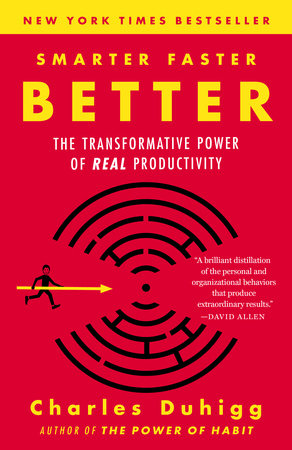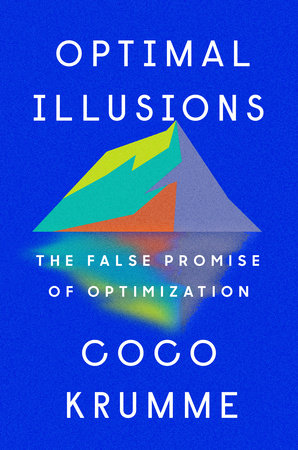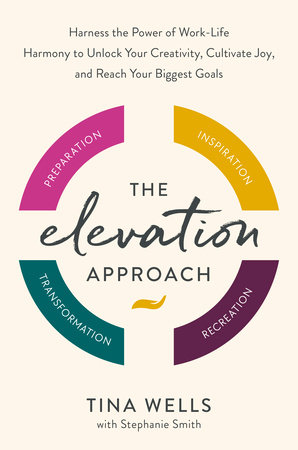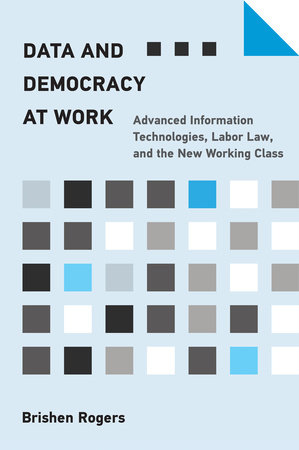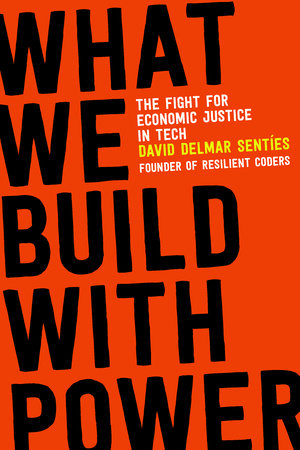Quick Summary
One sentence summary
“Smarter Faster Better” delves into the science of productivity, offering insights into making better decisions, motivating oneself, and achieving more in our increasingly busy lives.
Big idea
The core premise of Charles Duhigg’s book is that productivity hinges on how we interpret information and the choices that we make, rather than the amount of time and energy we spend.
Five key ideas
- Motivation is a skill: It can be cultivated through choices that empower us to take control.
- Teams function best with psychological safety: This environment fosters ideas and risk-taking.
- Focus on SMART goals and stretch goals: A combination of both types of goals helps in achieving long-term visions and the immediate tasks at hand.
- Decision making improves with probabilistic thinking: Embracing uncertainty helps to forecast potential outcomes and make better choices.
- Innovation is linked to creative disfluency: Engaging with information in a deeper, more strenuous way sparks creativity.
Actionable advice
- To boost motivation, reframe your tasks to identify their true value.
- Encourage a team culture where everyone has a voice, to improve overall performance.
- When making decisions, quantify the unknowns to better anticipate challenges.
About the author
Charles Duhigg is a Pulitzer Prize-winning reporter and author, known for his books on habits and productivity that combine scientific research with personal stories.
Read next
For those fascinated by Duhigg’s approach to habits and productivity, consider diving into “The Power of Habit” which precedes “Smarter Faster Better.” Alternatively, for a broader look at the interplay between individual habits and success, “Atomic Habits” by James Clear or “Deep Work” by Cal Newport offer complementary perspectives and methodologies.
In Depth
Motivation is a Skill
Motivation isn’t some mystical force; it’s a skill, one that we can foster through our choices, giving us leverage over our actions and inspiring us to stay engaged. Duhigg emphasizes that the feeling of control is what ignites motivation. When we feel in charge, our drive to see things through skyrockets.
A standout example from “Smarter Faster Better” is the story of the Rhode Island hospital that combated a severe problem of surgical implements being left in patients after surgery. The resolution didn’t come from implementing more rules; it emerged when nurses were encouraged to speak up, to take control. A simple shift in protocol, empowering nurses to voice concerns, drastically reduced surgical errors. It’s a vivid illustration of how giving individuals a sense of control can significantly impact motivation and outcomes.
Duhigg suggests that to tap into this kind of intrinsic motivation, we should frame our choices in a way that connects them to our larger ambitions. It’s not just about doing a task; it’s about furthering a bigger goal. This connection is crucial because it transforms activities into self-selected goals, making even the mundane tasks feel significant.
“The key to motivation turns out to be largely within our own control. It can be seized by creating choices that allow us to feel a sense of control.”
This idea leans on the concept of internal locus of control, where individuals believe they can influence events and their outcomes, rather than external forces having all the power. When we personalize our approach to tasks, seeing them as choices rather than chores, our engagement levels change. We’re not just ticking boxes; we’re actively shaping our path.
For instance, consider a student studying for an exam. If they view their study sessions as a mandatory slog, their motivation wanes. However, if they reframe these sessions as a choice towards becoming a top graduate and shaping their future, the motivation changes gears. It’s the same task, but with a very different psychological backdrop.
Duhigg’s exploration of motivation as a skill offers a refreshing take that it’s not inherently bound to the task at hand, but rather it’s about the perception of control over the task. The more we can customize our approach and feel in charge of the process, the more motivated we become. This turns routine into a building block for greater accomplishments.
In the workplace, this can translate to employees taking ownership of projects, managers offering choices in how work is done, and companies benefiting from increased initiative and productivity. In personal life, it’s about choosing our responsibilities and understanding how they fit into our larger goals.
Fostering motivation is, therefore, a delicate balance of self-awareness and structural choice, of linking our day-to-day actions with our deepest ambitions and taking charge of the narrative. It’s a skill, as Duhigg puts it, and like any skill, it can be honed. The sense of autonomy this fosters is what keeps the engine of motivation running, not just faster and stronger, but smarter.
Teams Function Best with Psychological Safety
Imagine walking into a meeting knowing your ideas matter. That’s psychological safety. In “Smarter Faster Better,” Duhigg points out that teams thrive when each member feels safe to express ideas without fear of ridicule. It’s not just about being nice; it’s about creating a space where risks are taken, which is crucial for innovation.
A case in point is the transformation story of the Saturday Night Live writers’ room. Initially, it was a competitive environment, rife with tension. Yet, it evolved into a creativity hub, precisely because Lorne Michaels fostered psychological safety. Writers felt comfortable pitching any idea, no matter how outlandish, without fear of embarrassment. This change didn’t soften the competition; it made it healthy, driving the show to new heights of success and creativity.
“Psychological safety is ‘a shared belief, held by members of a team, that the group is a safe place for taking risks.’ It is a ‘sense of confidence that the team will not embarrass, reject, or punish someone for speaking up.'”
This psychological safety net is the bedrock of successful collaboration. It’s about knowing that the team has your back, so you can leap with your ideas. Duhigg tells us that it’s not enough to gather talents in a room. How they interact makes the difference. It’s the group dynamics, the shared belief that the environment is conducive to taking risks, that fuels great teamwork.
For example, Google’s Project Aristotle, which scrutinized hundreds of its teams, found that the best teams were not those with top individual performers, but those where psychological safety was a priority. People spoke in roughly the same proportion, a phenomenon termed “equality in conversational turn-taking.” Each member felt they could speak up, and that’s where innovation blossoms.
Applying this to the everyday work environment, it suggests that meetings should be run in a way that encourages everyone to contribute, not just the most outspoken. It’s about leaders asking for opinions, acknowledging contributions, and setting the stage for everyone to share without apprehension.
Creating this kind of team atmosphere can be challenging, but it’s clear from Duhigg’s research that the rewards are substantial. When team members don’t spend energy guarding their backs, they’re free to march forward, bringing their full creative force to bear on the task at hand.
Psychological safety transforms teams from mere groups of individuals working side by side into cohesive units that outperform the sum of their parts. As leaders, team members, and collaborators, it’s a crucial skill to develop. It’s about listening, encouraging, and creating a culture of shared risk. That’s where ordinary teams become extraordinary.
Focus on SMART Goals and Stretch Goals
Duhigg emphasizes a dual-lens approach to goal setting: SMART (Specific, Measurable, Achievable, Relevant, Time-bound) goals for clarity and immediate planning, paired with stretch goals for setting ambitious visions.
SMART goals are your ladder to climb higher; they make sure you’re stepping firmly, checking off tangible achievements. Stretch goals are your mountain, the lofty peak you aim to conquer. Together, they’re a power duo: the daily to-do list alongside the dream.
A prime example from “Smarter Faster Better” is the story of how the automotive company, Toyota, turned around a failing manufacturing plant in Fremont, California. The plant had been one of the worst in North America, plagued by poor work ethics and shoddy quality control. Toyota set a stretch goal to make it one of the best by using their Toyota Production System. They didn’t just throw this massive goal at the workers; they broke it down into SMART goals. Workers were trained to identify issues that could halt the production line, with precise protocols for each problem. This blend of long-term vision and immediate, clear tasks transformed the plant into one of the best in the continent.
“A big part of being smarter, faster, and better at life is to be a little bit more boring in your daily life.”
This blend is the golden mean of productivity. The stretch goal provides the pull of inspiration, while SMART goals offer a roadmap to get there, avoiding the paralysis that often accompanies grand ambitions. When you set a stretch goal, it can feel like staring up at a sheer cliff face. But by then setting SMART goals, you’re carving steps into the rock face, making the climb possible.
Think of it like a writer aiming to pen a bestselling novel — that’s the stretch goal. They might set SMART goals to write a chapter each week, attend writing workshops monthly, and finish a draft in six months. This dual approach keeps the writer’s eyes on the prize while clearly marking the path to get there.
In practice, this idea can translate into personal productivity systems where, for instance, an individual has a vision of achieving a healthier lifestyle (stretch goal) and sets SMART goals like doing 30 minutes of cardio five days a week and eating three servings of vegetables daily. Each small win on these SMART goals builds momentum towards the larger achievement.
Focusing on both SMART and stretch goals helps maintain a balance between what’s needed now and where you want to go. It’s about keeping your feet on the ground while reaching for the stars. This method ensures progress without overwhelm, driving sustained effort towards grand achievements.
Decision Making Improves with Probabilistic Thinking
When it comes to making decisions, Duhigg introduces us to the concept of probabilistic thinking. It’s about embracing the complexity of our choices by considering the likelihood of different outcomes, rather than seeking a single certain answer. This mindset acknowledges that the future is inherently uncertain and that the best we can do is weigh our options based on the probability of various scenarios.
A detailed example featured in “Smarter Faster Better” recounts the harrowing story of a flight that encountered a problem after takeoff. The pilot, faced with a rapidly evolving emergency, had to make life-or-death decisions with incomplete information. By quickly analyzing the probabilities of each possible action, the pilot was able to choose the course with the highest chance of success, ultimately saving the plane and its passengers.
“Good decision making is less about making consistently sound decisions and more about being able to gather disparate information and frame the future.”
The key takeaway is that when we face a decision, we should gather as much relevant information as possible and then think probabilistically to anticipate various futures. Rather than looking for what’s definitely right or wrong, we assess what’s more or less likely to happen. This allows for a more nuanced approach to decision-making that accounts for different variables and uncertainties.
For example, if a company is deciding whether to launch a new product, it shouldn’t look for a guarantee of success but rather estimate the probabilities of success based on market research, previous launches, and current economic conditions. They might consider the likelihood of high consumer demand versus the chances of a competitor releasing a similar product, and then decide based on which scenario seems more probable.
In everyday life, this might look like someone deciding whether to buy a home. Instead of trying to predict the housing market’s performance with certainty, they would consider factors such as interest rate trends, their job stability, and the historical performance of the housing market in their desired area, to estimate the probability of the home’s value appreciating.
This approach shifts the decision-making process from seeking certainty to managing uncertainty, which is a more realistic reflection of how the world works. It’s about becoming comfortable with the idea that there is no perfect choice, only choices that come with different sets of risks and benefits.
By adopting probabilistic thinking, we position ourselves to make better-informed decisions, taking into account the full spectrum of possible outcomes and their respective likelihoods. It’s a shift from a black-and-white view of decision making to one rich with shades of grey, where the ability to navigate nuances becomes a critical skill.
The Importance of Absorbing Data
In “Smarter Faster Better,” Charles Duhigg underscores the crucial role of absorbing data in a way that allows us to see patterns and connections that inform our actions. This isn’t about being a human database; it’s about nurturing a relationship with information so that it becomes knowledge.
An illuminating case from the book is the narrative of the Cincinnati Public Schools, which were struggling with poor performance. Instead of just shuffling data around, the educators started delving deeply into the numbers, parsing out the nuances of what was really happening in their classrooms. This wasn’t just about standardized test scores; it was about attendance patterns, behavior incidents, and even how students felt about their homework. By absorbing this data holistically, educators could make targeted changes that genuinely addressed the issues at hand.
“Information alone is not knowledge. It becomes knowledge when it’s organized into patterns that help us understand the world.”
The story exemplifies how raw data was transformed into actionable insights. School administrators, teachers, and even students began to digest this data, discuss it, and brainstorm solutions. They moved from passive receivers of information to active interpreters, engaging with the data in a way that fostered real understanding and prompted effective actions.
To illustrate further, imagine a business analyst not just reporting on quarterly sales figures but examining customer feedback, return rates, and market trends. By absorbing this varied data, they can provide insights into not just what’s selling, but why it’s selling and how it might sell better.
This idea challenges us to become active participants in the data consumption process, asking probing questions, and seeking out patterns. It’s about turning data into a story that provides insights, not just a spreadsheet that gives numbers. In practice, this means when faced with reports, statistics, or any form of data, we don’t just take it at face value. We look for the narrative behind the numbers.
For instance, a marketer looking at social media metrics should seek to understand the behaviors driving the trends. Why did a particular post go viral? What does the data say about the audience’s preferences? It’s about connecting the dots to form a larger picture that informs smarter strategies.
By internalizing data in this way, we start to see how different pieces fit together, giving us a clearer vision of the larger puzzle. It turns information into a tool rather than just a task, enabling smarter decisions that are data-informed rather than data-driven.
Absorbing data effectively requires a shift from passive observation to active analysis. It’s a skill that, once honed, can transform the endless stream of information we encounter into genuine insights, leading to smarter, faster, and better results in both our personal and professional lives.
Actionable Advice
- Set Stretch and SMART Goals: Dream big with a stretch goal and break it down into specific, measurable, achievable, relevant, and time-bound tasks.
- Embrace Psychological Safety: Foster an environment where team members feel safe to share ideas and take risks without fear of embarrassment or reprimand.
- Cultivate a Bias Towards Action: When facing choices, lean towards taking decisive actions that can be refined as you gather feedback.
- Practice Probabilistic Thinking: When making decisions, weigh the probabilities of different outcomes instead of seeking absolute certainties.
- Learn to Absorb Data: Don’t just collect data; engage with it to see patterns and connections that inform smarter decisions.
- Cultivate a Commitment Culture: Encourage a team culture where commitment to shared goals is paramount, and individual efforts align with team success.
- Build Mental Models: Pre-imagine the steps of your tasks and the desired outcomes. This prepares you for action and helps focus your attention.
- Stay Inquisitive: Keep asking ‘why’ to understand underlying processes, not just surface phenomena, to gain deeper insights.
- Prioritize Learning from Failure: View every setback as a learning opportunity and adjust your strategies accordingly.
- Innovate Continuously: Constantly challenge the status quo and encourage innovation by allowing time and space for brainstorming and experimentation.
About the Author
Charles Duhigg is a Pulitzer-prize winning journalist and the author of “The Power of Habit” and “Smarter Faster Better,” books that delve into the science of productivity and habits. With a background from Yale University and the Harvard Business School, he’s built a career unpacking complex topics into engaging narratives. Duhigg’s work at The New York Times has spanned various topics, from technology to the economy, earning him accolades including the National Academies of Sciences, National Journalism, and George Polk awards. His belief in the power of habits to transform lives underscores his writing, pushing the idea that small changes can yield substantial results. In “Smarter Faster Better,” he explores the science of productivity and how individuals and companies can harness the principles of smarter work to enhance efficiency and innovation. Duhigg’s insightful storytelling pairs with a research-backed optimism that individuals can reshape their lives through deliberate practice and thoughtful habit creation.
Read These Next
You might like these similar books
- “The Power of Habit” by Charles Duhigg
- “Deep Work” by Cal Newport
- “Atomic Habits” by James Clear
- “Mindset: The New Psychology of Success” by Carol S. Dweck
- “Drive: The Surprising Truth About What Motivates Us” by Daniel H. Pink
FAQ
What is the main message of “Smarter Faster Better”?
The book explores the science of productivity and suggests that being more productive involves making certain choices in certain ways.
Who would benefit from reading this book?
Anyone looking to enhance their productivity, from professionals seeking efficiency to students aiming to optimize their study habits.
Does “Smarter Faster Better” provide practical strategies?
Yes, the book is packed with actionable advice on how to transform habits, make smarter decisions, and increase the drive to achieve goals.
How is “Smarter Faster Better” different from “The Power of Habit”?
While “The Power of Habit” focuses on how habits work, “Smarter Faster Better” takes it a step further by applying these principles to the broader context of productivity.
Can the principles in the book be applied to teams and organizations?
Absolutely, the book offers insights on team motivation and management, making it relevant for leaders and teams in various settings.
Is there a particular success story that stands out in the book?
Yes, the transformation of the Cincinnati Public Schools system is a standout case of turning around performance through data-driven decision-making.
How long does it take to read “Smarter Faster Better”?
The reading time varies, but on average it might take around 7 to 10 hours for a moderately fast reader.

